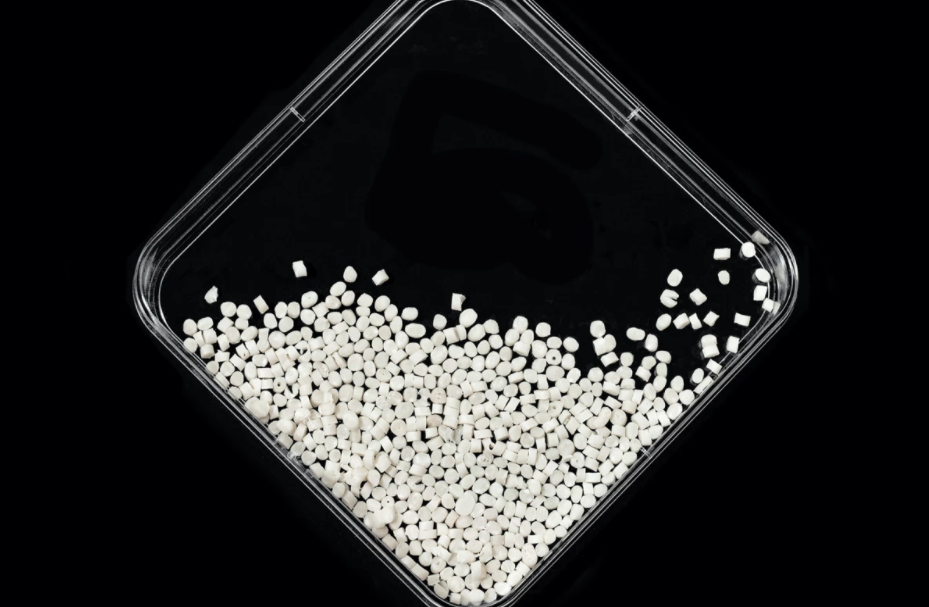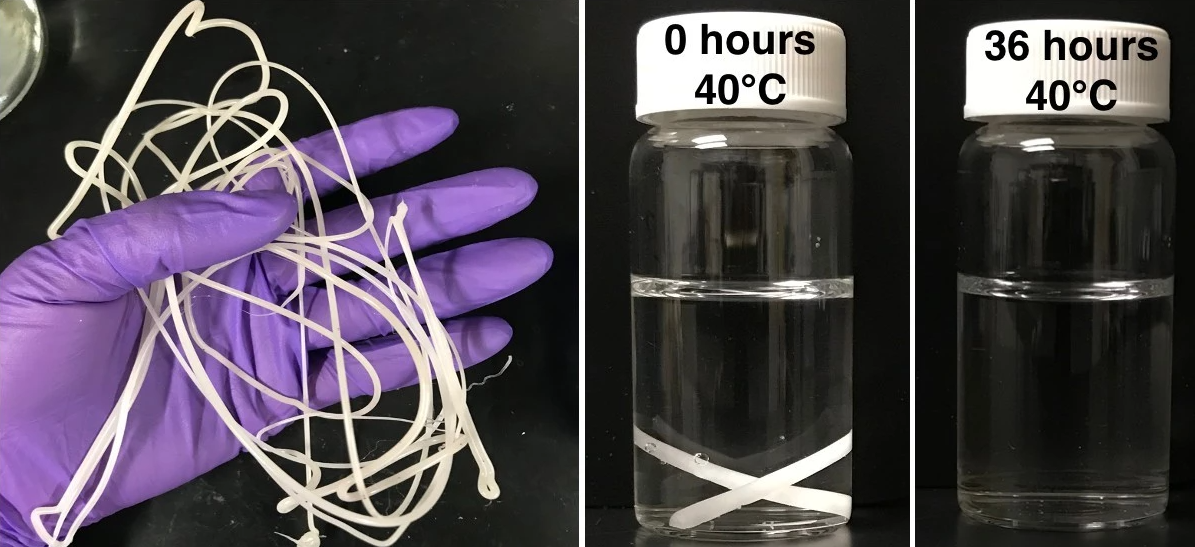The fight against plastic pollution is being fought on several fronts. One of the problems with this material is that it
Today, most plastics are made fromchemical substance derived from oil. It is processed to form strong carbon bonds between individual monomers, which combine into long chains to form a polypropylene polymer. Such processes do not occur in nature, therefore it is very difficult for such bonds to disintegrate in their natural habitat.
Much research on plasticsfocuses on new recycling methods that can break these chains more efficiently and allow material to be reused. At the same time, some scientists are striving to create plastic that is completely recyclable, for example, from natural materials and with special enzymes that break down the material after use.
Here are five of the most promising green plastics breakthroughs.
Wood powder bioplastic: decomposes in 3 months
A team from Yale University combinedwood powder and biodegradable solvent. As a result, scientists turned sawmill waste into a suspension of organic polymers and cellulose with hydrogen bonds and interweaving at the nanoscale. Then, during the course of the study, the scientists cast the suspension into a bioplast.

After, the scientists conducted an experiment.They dipped sheets of bioplastic into soil, where the molecular bonds began to break down in two weeks, and the samples completely decomposed in three months. The bioplastic also exhibited high mechanical strength, fluid retention stability and UV resistance.
In addition to rapidly degrading, bioplastics can also be returned to their original suspension form. This allows the solvent to be recovered and reused.
The study was published in the journalNature Sustainability.
Bioplastic from waste: biodegradable in 12 months
Scientists from the Institute of Production Systems and Design Technologies named after Fraunhofer in Germany used industrial waste in the form of fats, which contain a large amount of residual minerals.
In the fermentation chamber, genetically modifiedbacteria metabolized these minerals into a biopolymer, polyhydroxybutyrate (PHB). Microbes stored it in their cells in liquid form as a source of energy.
 Bacterial Polyhydroxybutyrate Granules
Bacterial Polyhydroxybutyrate Granules
Fraunhofer IPK / Andy King
After the PHB was subsequently dissolved,scientists mixed it with proprietary chemical additives. With their help, PHB quickly solidified. The result is a bio-derived polyester. The authors of the development have shown that the material exhibits properties similar to those of polypropylene.
Experiments have also shown that if a PHB-based polyester is placed in a landfill, natural microorganisms will completely destroy it within 6-12 months.
Built-in enzymes decompose material in a few days
Scientists from the LaboratoryBerkeley has developed a way to embed small amounts of commercial enzymes directly into the plastic itself, so that the material breaks down on its own wherever they end up.
At the same time, so that the plastic remains stableform, the researchers added a four-monomeric random heteropolymer (RHP) to the material. Its task is to disperse enzymes at a distance of several nanometers from each other.
 Sample of new biodegradable plastic with embedded enzymes before and during composting
Sample of new biodegradable plastic with embedded enzymes before and during composting
University of California at Berkeley
The result is plastic, whichremains stable with regular use, but only begins to break down upon contact with compost soil or hot water. In testing, the team found that soaking the plastic in water at room temperature for three months did not cause it to degrade—a process that only kicks in when the temperature rises slightly.
 In warmer-than-usual water, the new plastic is completely destroyed in a few days.
In warmer-than-usual water, the new plastic is completely destroyed in a few days.
University of California at Berkeley
The team has already applied for a patent for a new degradable plastic and founded a startup to help commercialize it.
The study was published in the journalNature.
Plant-based bioplastic: degrades in 4 years
NEC is also working on moldsenvironmentally friendly plastic and created a recipe for creating a material that is as durable as traditional plastic, but much more environmentally friendly. The new NeCycle material consists of 50% cellulose obtained from inedible plants - wood and straw. The authors of the development note that it can be used for injection molding, like conventional plastics.
 NEC has created a new bioplastic in the form of granules or molded components for all types of products
NEC has created a new bioplastic in the form of granules or molded components for all types of products
This gives it the same characteristics as that ofconventional plastics. At the same time, during its creation, fossil resources are not used, and it also does not pollute the natural environment, decomposing in about four years. NEC said it is already ready for mass production of NeCycle.
Plastic decays in a week in sunlight
Researchers from China have created a new type of plastic that decomposes in just a week when exposed to sunlight and oxygen.
The new material appeared by accident when the authorresearch Liang Luo of China Huazhong University of Science and Technology has been working on an improved type of chemical sensor. A materials scientist was developing a new polymer film that changed color depending on the pH level. This process was driven by the unique molecular structure of the material: chains of monomers give the film a dark red color and carry it away when these bonds are broken.
Through his team's experiments, Luo discoveredthat the dark red color of the film quickly disappeared, and the material itself decomposed after several days in sunlight. Breaking these bonds is precisely the common goal of plastics processing research.
Plastic is not suitable for bottle usefrom soda or shopping bags, as it quickly decomposes under exposure to sunlight and air and decomposes completely within a week. At the same time, without leaving behind fragments of microplastics that destroy the environment. Where the new plastic comes in handy is in flexible electronics or smartphones - there it will be isolated from air and light for its entire life.
Read more
Japanese scientists presented a method of moving objects with sound waves
For the first time in history, 9 stars disappeared in half an hour and did not return
Detailed photos of galaxies closest to us appeared